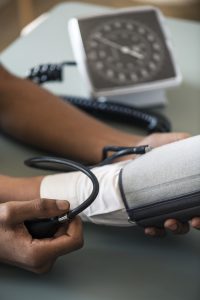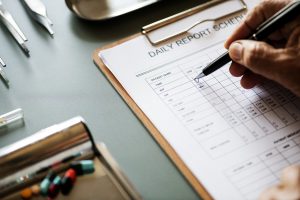Hypertension, another name for high blood pressure, can lead to serious complications including heart disease, stroke, and death. One in 3 adults have hypertension, which is about 75 million Americans. Tracking your high blood pressure is important because the higher it is, the higher you are at risk of heart problems. High blood pressure puts more strain on your heart and your arteries. The arteries will become thicker and weaker over time, which in turn makes them more narrow. The more narrow an artery becomes, then the more likely it is to clog up which can lead to a heart attack, stroke, kidney issues, and even dementia.

The more strain and weaker your artery becomes, the more likely your artery will burst causing a heart attack. There are ways to lower your blood pressure, including physical activity, diet change, and the most important way is to monitor it every day. A research in Minnesota studied 450 people with hypertension, and half were given home blood pressure monitors. The other half got the usual care from their primary doctors. The group that got the home monitoring systems had more success in getting their blood pressure under control than the other group.
What To Do
Having an at-home blood pressure monitor is convenient and easy to use if done correctly. You need to be properly positioned when testing your blood pressure to get the best numbers. Make sure to be sitting with your upper arm, heart, and monitor at the same level. This will produce the most accurate levels. Record every time you take your blood pressure. Keeping track of your levels important so you can manage your blood pressure.
How Often To Check
After you have bought the right kind of blood pressure monitor for your home, make sure to test at the right times to get the best results. Check your blood pressure twice a day, once in the morning before any medication, and the other in the evening. Then you will drop to doing it 2-3 days a week. Take note of any symptoms you may experience such as dizziness during readings. After this, report to your doctor and ask your doctor how often you should continue to check your blood pressure at home.

You can buy an at-home blood pressure monitor at a pharmacy or online for anywhere from $50 to $100. Your insurance company may cover come of the cost, so find out if they do by calling and asking. Once you get an at home monitor, ask your doctor, nurse, or pharmacist how to use it. If you are one of the millions of Americans that suffer from high blood pressure, then consider an at-home monitor. Studies have show that people who check their levels at home had better results of managing and lowering their blood pressure. High blood pressure can lead to heart disease, attacks, and strokes. An easy way to regulate it and lower it is by checking your blood pressure regularly at home.
